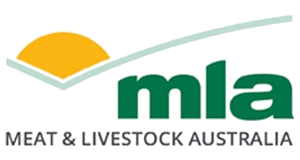Cutting room traceability
Did you know that potential new approaches for industry best practice regarding cutting room traceability have been identified?
| Project start date: | 24 December 2019 |
| Project end date: | 14 May 2020 |
| Publication date: | 21 January 2021 |
| Livestock species: | Grain-fed Cattle, Grass-fed Cattle, Sheep, Goat, Lamb |
| Relevant regions: | National |
|
Download Report
(0.7 MB)
|
|
Summary
Meat (primals, trim, offals) leaves processing establishments in a carton with a label providing detailed information about the product and a unique GS1-compliant barcode. This is probably the most vulnerable point in supply chain integrity for the product’s journey to a consumer; when the contents of the carton are prepared for retail sale (trimming, portioning, offcuts etc.).
This project documents procedures in place within Australian export licenced plants to mitigate the above risk – both, systems in operation now and hypothetical ones.
It is apparent that one individual system will most likely not result in full traceability, that the system needs to include various aspects such as blockchain network systems combined with secure digital markers.
Objectives
The objective of this project was to determine:
- what product information needs to be transmitted from the product in the carton to the cut up/portioned form
- approaches and procedures can be taken to ensure (prevent lack of) fidelity of information transfer during this process
- approaches and procedures may be taken to audit such a process.
Key findings
- Finished products at a processor are identified with a label that identifies several elements. This information includes the production date of the product in addition to the establishment where the product was processed.
- Australian carton label barcodes can be verified and traced with the industry owned electronic MeatMessage program.
- Some companies have found benefits in having value-add facilities in the importing country so they can vertically integrate to enable the production of shelf ready products within the desired country. This reduces the risk of fraud on their brands, whilst providing a product with adequate shelf life.
Benefits to industry
This project largely documents industry best practices for cutting room traceability and provides approaches for businesses needing to improve their performance in this area. Potential new approaches are also described which could benefit businesses in the future.
Technology providers are also provided with a description of the process to which their technologies may contribute.
MLA action
MLA will seek to work with technology providers who are able to contribute to providing greater assurance of cutting room activities.
Future research
Future work in this area should include new technology developments to provide greater assurance of cutting room activities.
More information
| Contact email: | reports@mla.com.au |
| Primary researcher: | Natasha Wing |


